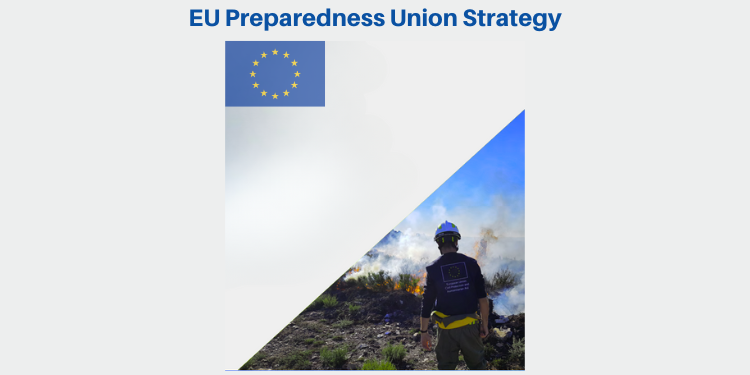A People-Focussed Turn in European Security: EUROMIL Welcomes the European Preparedness Union Strategy
On 26 March 2025, the European Commission and the High Representative of the Union for Foreign Affairs and Security Policy published the European Preparedness Union Strategy, a comprehensive and timely initiative aimed at strengthening the EU’s capacity to anticipate, prepare for, and respond to crises of all kinds. European Commissioner for Equality, Preparedness and Crisis Management Hadja Lahbib and Roxana Minzatu, EU Commission Executive Vice-President for Social Rights and Skills, Quality Jobs and Preparedness held a press conference to detailed present the strategy. For EUROMIL, the EU’s Preparedness Strategy represents a most welcome significant shift.
Just a week prior, EUROMIL had strong criticism on the White Paper on European Defence Readiness 2030, which placed heavy emphasis on defence industry development and capability investment, while overlooking the human resources dimension and broader societal resilience. The new Preparedness Union Strategy corrects that imbalance by adopting a more inclusive, integrated and people-centred approach.
From Defence Readiness to Societal Resilience
The Preparedness Union Strategy is built on three principles: an all-hazards approach, a whole-of-government coordination framework, and a whole-of-society engagement model. Especially the latter is crucial! This reflects lessons learned from recent crises, such as the COVID-19 pandemic, natural disasters, and Russia’s war of aggression against Ukraine and recognises that Europe’s ability to respond to emergencies depends not only on infrastructure and technologies but also on the people and communities that keep society functioning in times of crisis.
One of the key innovations in the strategy is its strong emphasis on the availability and mobility of skilled personnel during crises. The document calls for the development of frameworks to enable the rapid deployment of workers and volunteers across the EU, and measures to make careers in civil protection, emergency services, healthcare, defence and security more attractive. This represents an important acknowledgment of the critical role of professionals, including military personnel and reservists, in the broader European preparedness architecture.
In this context, EUROMIL sees clear opportunities to reinforce the link between civilian crisis response and military careers. Many of the qualities sought in emergency preparedness such as mobility, discipline, operational capability, and inter-agency coordination, are already embedded in the skillsets of European armed forces. The strategy opens the door to enhanced civil-military cooperation, including shared training, joint exercises, and common investment in dual-use infrastructure.
Inclusion, Equality, and Social Dialogue
Beyond operational measures, the strategy places particular emphasis on equality and inclusion. It explicitly refers to the Union of Equality framework and the Roadmap for Women’s Rights, committing to mainstream equality considerations into all phases of preparedness planning and crisis response. This includes a focus on vulnerable groups and the need for accessible and inclusive communication and warning systems.
Importantly, the strategy also pledges to engage civil society organisations and social partners. This marks an essential shift from a top-down vision of preparedness to one that involves all segments of society, including those who represent the interests of workers and professionals in the defence and security sector.
EUROMIL President Emmanuel Jacob welcomed the new approach, stating: “We see this as an important step towards the future. The recognition of social partners and skilled personnel as pillars of preparedness brings much-needed balance to the European security debate. True resilience is built on people, not just technology.”
From Strategy to Action
Accompanying the strategy is a detailed Action Plan, which outlines over 60 concrete steps to be implemented between 2025 and 2028. These include the creation of an EU-wide catalogue of training opportunities, the strengthening of civil-military coordination mechanisms, the establishment of a Preparedness Task Force, and the revision of the Union Civil Protection Mechanism. Specific initiatives also address labour mobility, the deployment of volunteers, and support for the attractiveness of crisis-related careers.
As the EU continues to shape its strategic autonomy and security architecture, EUROMIL urges policymakers to maintain this people-centred approach. Investing in technology and capability is necessary, but it must go hand-in-hand with investing in the human dimension: the men and women behind European defence.

